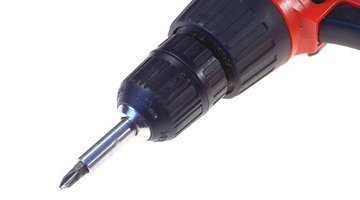How to Use Screws in a Cedar Deck
Screws take a little longer to install compared with nails, but if you're building a deck, they hold tighter and don't tend to work loose as people walk across the floorboards. Cedar's soft wood means you can start most screws without pre-drilling, according to Scott Schuttner, author of "Building a Deck." Purchase collated screws, all aligned vertically in a strip, to speed up work even more. If screws don't drive easily without a pilot hole, use self-tapping screws.

-
Purchase stainless-steel screws long enough to extend at least 1 inch through floorboards into floor joists or 1½ inches into the underlying wood for structural applications, according to the Western Red Cedar Lumber Association. Galvanized screws that are double hot-dipped are also acceptable and less expensive, according to the WRCLA, but not as long-lasting as stainless steel. Another option is coated screws that you can purchase colored to match cedar or in a contrasting color. Cedar contains tannins that may react with steel and cause black stains, if screws corrode, so choose the most corrosion-resistant screws you can afford.
-
Insert a Phillips or square tip in an electric drill or screw gun, depending which head your screws have. Drive a test screw in a scrap floorboard to see if the head will sink level with the surface, without a pre-drilled countersinking hole. Screws with bugle heads will probably sink themselves without pre-drilling in cedar, but other shapes may require you to drill a shallow cone-shaped hole with a countersink bit in areas where you want them fully sunk.
-
Drill pilot holes for screws that go near the ends of boards. Choose a drill bit slightly smaller than the diameter of the screw's main shaft, not including the threads. Even if the screws drive easily without a pilot hole, they may split out the ends of boards without one.
-
Assemble the deck with screws, first drilling pilot holes or countersinking holes as needed. After the deck has been exposed to dry weather for a few weeks, check to see if any screws appear above the surface due to wood shrinkage and tighten them with a hand screwdriver or power screwdriver.
References
Writer Bio
David Thompson began writing for eHow in 2009. He has written how-to articles on home improvement, carpentry, cabinet making and gardening.
Photo Credits
- screwdriver #4 image by Adam Borkowski from Fotolia.com
More Articles



